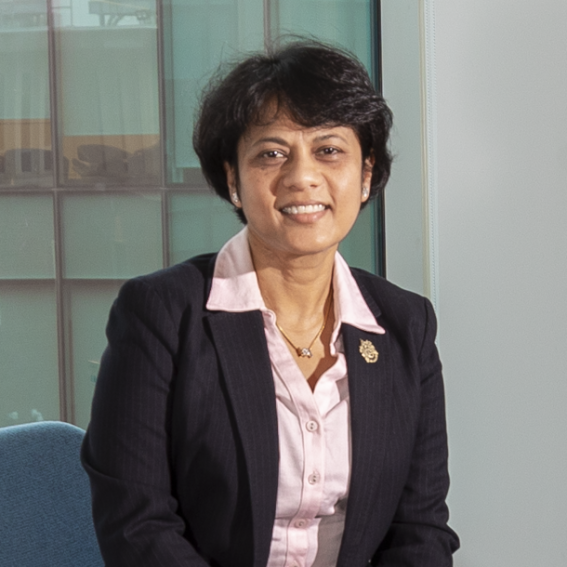Faculty Research: Can Technology Enhance Workplace Inclusion?
August 24, 2023

Growing up in India, Monideepa Tarafdar never had a sense of limitation simply because she was a girl. She never felt inferior in any way, or that there was anything she couldn’t do. Any inkling of such a notion, she said, came only when she entered the workforce.
“And what I noticed is this kind of thing is very embedded,” said Tarafdar, Charles J. Dockendorff endowed professor and PhD coordinator in information systems at the Isenberg School of Management. “It happens in everyday practices—everyday words, emails, how people react to you. And you cannot just pluck it out and say, ‘Here’s the bias; let’s get rid of it.’ It is very insidious.”
Combined with her rich professional background in the male-dominated fields of engineering and technology before she studied management, these firsthand experiences served as natural inspiration for the accomplished researcher’s latest project focused on the role of information and communication technologies (ICT) in fostering more inclusive workplaces: “Can ICT enhance workplace inclusion? ICT-enabled workplace inclusion practices and a new agenda for inclusion research in Information Systems”—published in The Journal of Strategic Information Systems in June.
As primary investigator on the study, Tarafdar and her team set out to explore the multiple nuanced roles that ICT can, and does, play in an organization’s diversity, equity, and inclusion (DEI) efforts and the general employee experience. The researchers began by reviewing existing literature on the topic before conducting interviews at their empirical site, a large and prominent recruitment firm in the United Kingdom. Almost immediately, they discovered a notable disconnect between what they had read and what they were hearing.
“The impression I got [from the literature] was, you do this, and you’re done. You just announce the DEI program, and people take part in the program, and you do X, Y, and Z, and you achieve your purpose,” Tarafdar said. “But when I went into the company, I realized it was far from that. There were so many people who said, ‘We don’t like this DEI thing. It doesn’t make sense to us.’ That’s when we realized that every practice had struggles.”
Technology Supporting DEI Efforts
Equipped with these initial findings, the researchers investigated how four ICT-enabled practices—expanding (fair recruitment), orienting (top management guidance), enculturating (employee interactions), and reflecting (analysis and learning)—can help counter three primary barriers to workplace inclusion: segregation, classification, and stereotyping. Video conferencing platforms, job boards, enterprise social networking applications, and social media channels are among the ICT the study highlights as playing a key role.
The results of their research, Tarafdar said, support the idea that standard DEI activities simply aren’t enough—and that ICT has the power to perpetuate positive change.
“The seminars are great, but unless they are integrated into the fabric, it doesn’t make sense,” she said. “And so, what technology can do is create that fabric, create virtual teams, and join people together. And as long as you understand it’s a journey, it prevents complacency.”
Tarafdar is currently taking a deeper dive into the realm of ICT for organizational and social good with a new study on whether, and how, language used in a job posting can affect who applies. Like the workplace inclusion study, the one in progress illustrates Tarafdar’s self-described gravitation toward the “more entangled” side of things.
“My interest is in getting into the weeds here,” she said. “We have so many studies that look at the big numbers. I want to see what is really going on underneath. Bring on the messiness.”